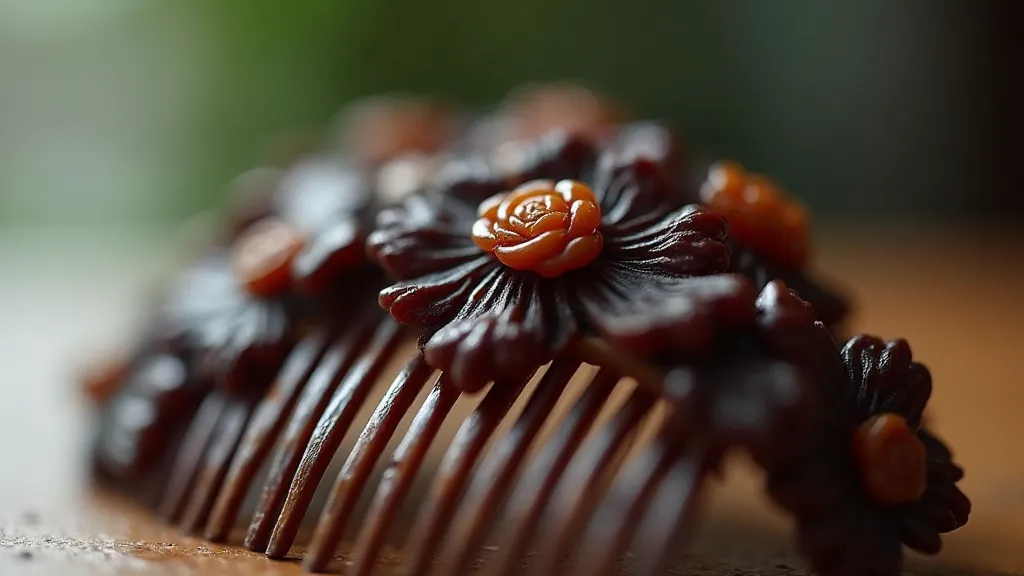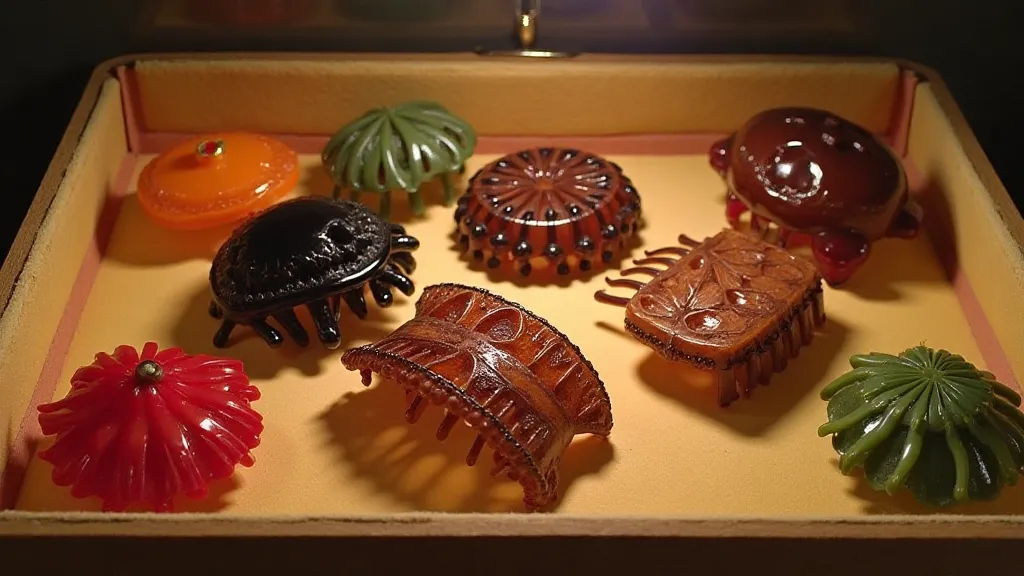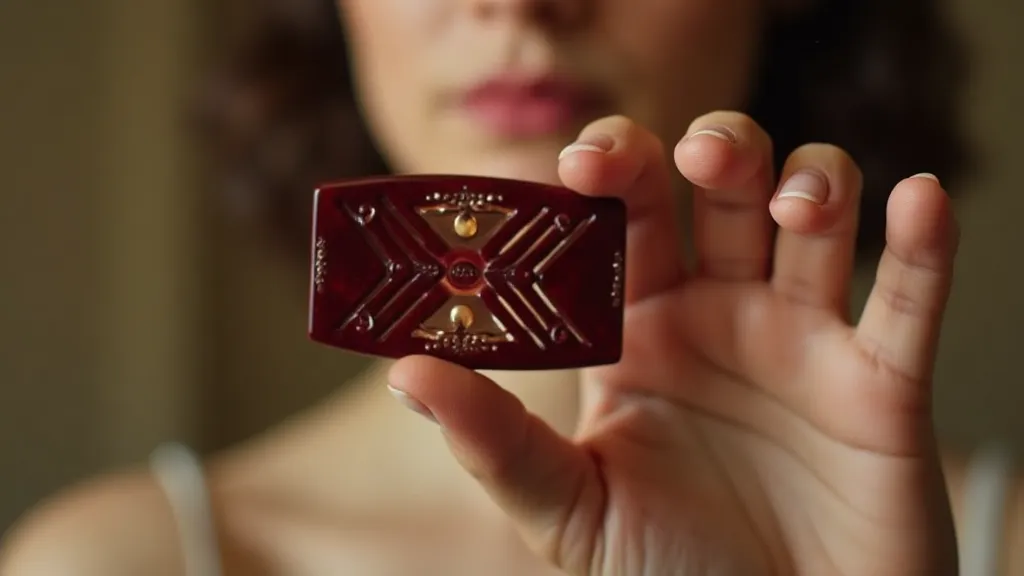Forgotten Flourishes: The Rise and Fall of Bakelite in Hair Comb Design
There’s a particular scent associated with vintage treasures – a whisper of aged paper, a hint of forgotten perfume, and sometimes, a faint, almost resinous aroma. For those of us captivated by vintage hair combs, that last scent often points to Bakelite, a revolutionary material that dramatically reshaped the world of hair accessories in the early to mid-20th century. These aren't just pieces of plastic; they’re tangible echoes of a bygone era, miniature sculptures that once adorned the hairstyles of flappers, movie stars, and everyday women.
My own fascination began with a small, amber-colored comb I found tucked away in my grandmother's attic. It wasn't particularly ornate, just a simple, slightly rounded design, but holding it in my hand, I felt a connection to a woman I barely knew – a woman who had styled her hair with this very object, likely to the tune of jazz music and the hope of a brighter future. That simple comb sparked a deep dive into the history of hair accessories, and the narrative of Bakelite emerged as a pivotal chapter.
The Pre-Bakelite Landscape: Luxury and Limitation
Before the advent of Bakelite, hair combs were primarily crafted from materials like tortoiseshell (harvested from endangered sea turtles, a practice now thankfully considered abhorrent), bone, horn, and precious metals. These materials were beautiful, certainly, but they also carried a significant price tag. Owning a collection of intricately carved tortoiseshell combs was a sign of considerable wealth and status. Hairstyles, too, were often dictated by the limitations of the materials. Elaborate carvings were possible, but the fragility of the materials meant designs had to be carefully considered.
Imagine the effort involved in obtaining the raw materials and the skill required to transform them into a functional and beautiful hair comb. It was a truly artisan-driven industry, with each piece a testament to the dedication of the maker. Yet, accessibility was a major hurdle. The average person might own a simple bone comb, but the luxurious, sculpted beauties were largely confined to the upper echelons of society.

The Bakelite Revolution: Accessibility and Artistic Freedom
Enter Leo Baekeland, a Belgian-American chemist, who in 1907, patented Bakelite – the first truly synthetic plastic. It was a game-changer. Suddenly, a durable, moldable material was available at a fraction of the cost of traditional materials. The implications for hair comb design were immediate and profound. Bakelite combs became available to a much wider audience, democratizing beauty and fashion in a way previously unimaginable.
The ease of molding Bakelite opened up an unprecedented level of artistic freedom for designers. Suddenly, combs could be produced in a dazzling array of colors – not just the natural hues of tortoiseshell and horn, but vibrant reds, blues, greens, and even marbled effects. Shapes could be bolder, more playful, and far more intricate. The Art Deco era (1920s-1930s) perfectly coincided with the rise of Bakelite combs, and the two became inextricably linked. Geometric patterns, stylized floral motifs, and representations of exotic animals found their way onto these small, functional works of art.
I recall discovering a small, turquoise Bakelite comb shaped like a stylized peacock. The detail was remarkable – the feathers suggested by delicate ridges, the eye a tiny, perfectly placed dot. The vibrant color was astonishing, something impossible to achieve with natural materials. It felt like a tiny window into a time of optimism and artistic experimentation.
Design Trends and Evolution
The early Bakelite combs (1920s) were often relatively simple, mimicking the styles of earlier tortoiseshell designs. As the technology improved and designers became more comfortable with the material, the designs grew increasingly elaborate. The 1930s saw the introduction of more complex molding techniques, allowing for the creation of layered designs and intricate three-dimensional forms. The use of celluloid, a similar early plastic, also influenced designs, with some combs featuring both materials.
During World War II, production of Bakelite slowed, and designs became more utilitarian. Post-war, the use of Bakelite continued, but it began to be replaced by newer plastics like acrylic. While Bakelite combs ceased to be the dominant force in the hair accessory market, their legacy remains strong.

Identifying and Caring for Bakelite Combs
Identifying a Bakelite comb is often straightforward, but not always foolproof. Genuine Bakelite has a distinctive warmth to the touch, a characteristic often described as feeling “almost alive.” It emits a particular odor when heated – some describe it as almond-like, others as slightly smoky. However, these tests aren’t always reliable, as some modern plastics can mimic these characteristics.
Visual cues can also be helpful. Early Bakelite combs often have a slightly grainy texture and a characteristic "antiquing" – a slightly clouded appearance due to oxidation. Later Bakelite combs can be smoother and shinier. A careful examination of the construction and markings (if any) can provide further clues.
Caring for Bakelite combs requires gentle handling. Avoid harsh chemicals and extreme temperatures. A soft cloth and mild soap can be used to clean them. Sunlight can cause fading, so store them in a cool, dark place. Small cracks and chips are common in vintage Bakelite, and while they can detract from the appearance, they are often part of the charm and history of the piece.
The Enduring Appeal
Collecting vintage Bakelite hair combs isn's just about acquiring beautiful objects; it’s about connecting with the past. Each comb tells a story – a story of innovation, of design, and of the women who wore them. They are tangible reminders of a time when beauty was accessible and artistry flourished.
The scent of Bakelite, that subtle, resinous aroma, isn’t just a smell; it's a portal to another era – an era of flapper dresses, jazz music, and a sense of boundless possibility. And for those of us captivated by these forgotten flourishes, it's a scent we’re delighted to keep alive.






